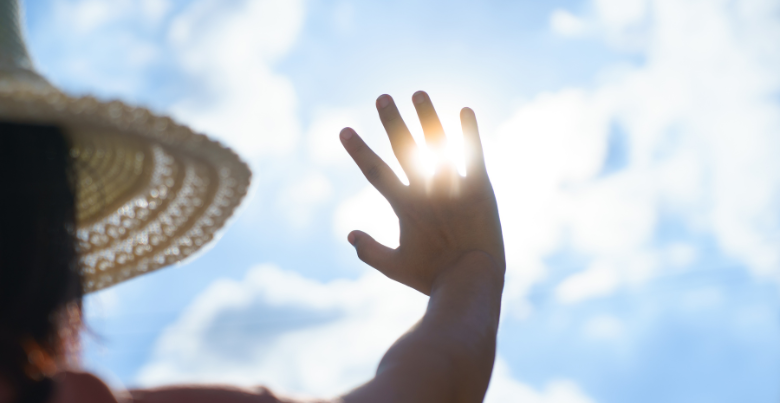June 19, 2024

When the sun comes out to play, many of us make plans to do the same. The summer months bring the promise of backyard barbecues, pick-up games in the park, and wasting away lazy afternoons in the water.
Summer also brings the heat – a potential threat to health that we should all stay alert to preventing and treating. Heat-related illness can take on several different forms, from heat rash, sunburn, and heat cramps, to even more serious and potentially life-threatening illnesses like heat exhaustion and heat stroke. Heat-related illnesses can strike when the body can’t properly cool itself through normal methods like sweating, and some heat-related illnesses can cause damage to essential organs, including the brain, and even be fatal.
Those who are most at risk for developing heat-related illness include senior adults, infants and children, those with chronic health conditions, athletes, and outdoor workers. That doesn’t let everyone else off the hook, however. Heat-related illness can affect anyone, and additional factors can come into play, including high levels of humidity, obesity, prescription drug use, alcohol use, and more. That’s why it’s important to know the different types of heat-related illnesses, how to prevent them, what to look out for, and what to do if illness strikes.

Preventing Heat-Related Illness
The good news is that heat-related illnesses are preventable and there are some basic tips to remember to help protect yourself and others, including:
- Wearing light, loose-fitting clothes
- Staying cool with air conditioning, and cool showers and baths
- Limiting outdoor activities to cooler times in the morning and evening
- Pacing yourself when it comes to outdoor activity and exercise
- Wearing sunscreen
- Never leaving infants, children or pets in parked cars (even if the windows are cracked open)
- Avoiding hot, heavy foods
- Staying hydrated with plenty of water (and keeping your pets hydrated, too!)
Heat Rash
Heat rash can present as small pimple-like blisters. If heat rash appears, move to a cool, dry place, keep the rash dry and use powder to alleviate discomfort.
Sunburn
If you’re reading this, there’s a good chance you’ve gotten sunburned before and experienced unwelcome results, including red, painful skin and blisters. If you get burned, it’s important to stay out of the sun until your burn heals. Apply cool cloths, aloe or moisturizing lotion to your burn. A cool bath may help soothe your skin, too. Whatever you do, don’t break those blisters! Allow them to heal. In order to, prevent sunburn, apply waterproof, wide spectrum UVA +UVB sunscreen with an SPF higher than 30. You should reapply every two hours and stay vigilant during 10 am to 4 pm when the sun’s rays are the strongest.
Heat Cramps
Heat cramps can bring excessive sweating and muscle pain and spasms. If you get heat cramps, stop your activity and get to a cool place, hydrate and let them pass before resuming any physical activity. If your cramps last longer than an hour, you’re on a low-sodium diet or you have heart problems and experience cramps, you should seek immediate medical help.
Heat Exhaustion
Symptoms of heat exhaustion include heavy sweating; cold, pale, clammy skin; fast or weak pulse; nausea; muscle cramps; fatigue; dizziness; headache and fainting. Get to a cool place, loosen your clothing, apply cool, wet cloths to your body (or try a cool bath) and hydrate. If you are vomiting, symptoms get worse or if they last longer than an hour, it’s important to seek medical attention immediately.
Heat Stroke
Heat stroke is the most severe and dangerous heat-related illness. Symptoms include a high body temp (103 degrees Fahrenheit or higher); hot, red, dry or damp skin; fast, strong pulse; headache; dizziness; nausea; confusion; and loss of consciousness. If you or someone you know is experiencing heat stroke, emergency medical attention is vital. Call 911 immediately, move the person to a cooler place, apply cool cloths to the body or take a cool bath, and do not let them consume any liquids.
As we move through the summer months, it’s also a good idea to keep an eye on those at greater risk for heat-related illness. Check in on them during the day and watch for the signs and symptoms above. And don’t forget to protect yourself. By taking simple preventive steps and knowing what to look for and what to do if heat-related illness rises, you can more safely enjoy the warmer weather and make it a summer to remember.
Lake Cumberland Regional Hospital can provide quality emergency care when you need it most. Visit LakeCumberlandHospital.com/emergency-services to learn more.
